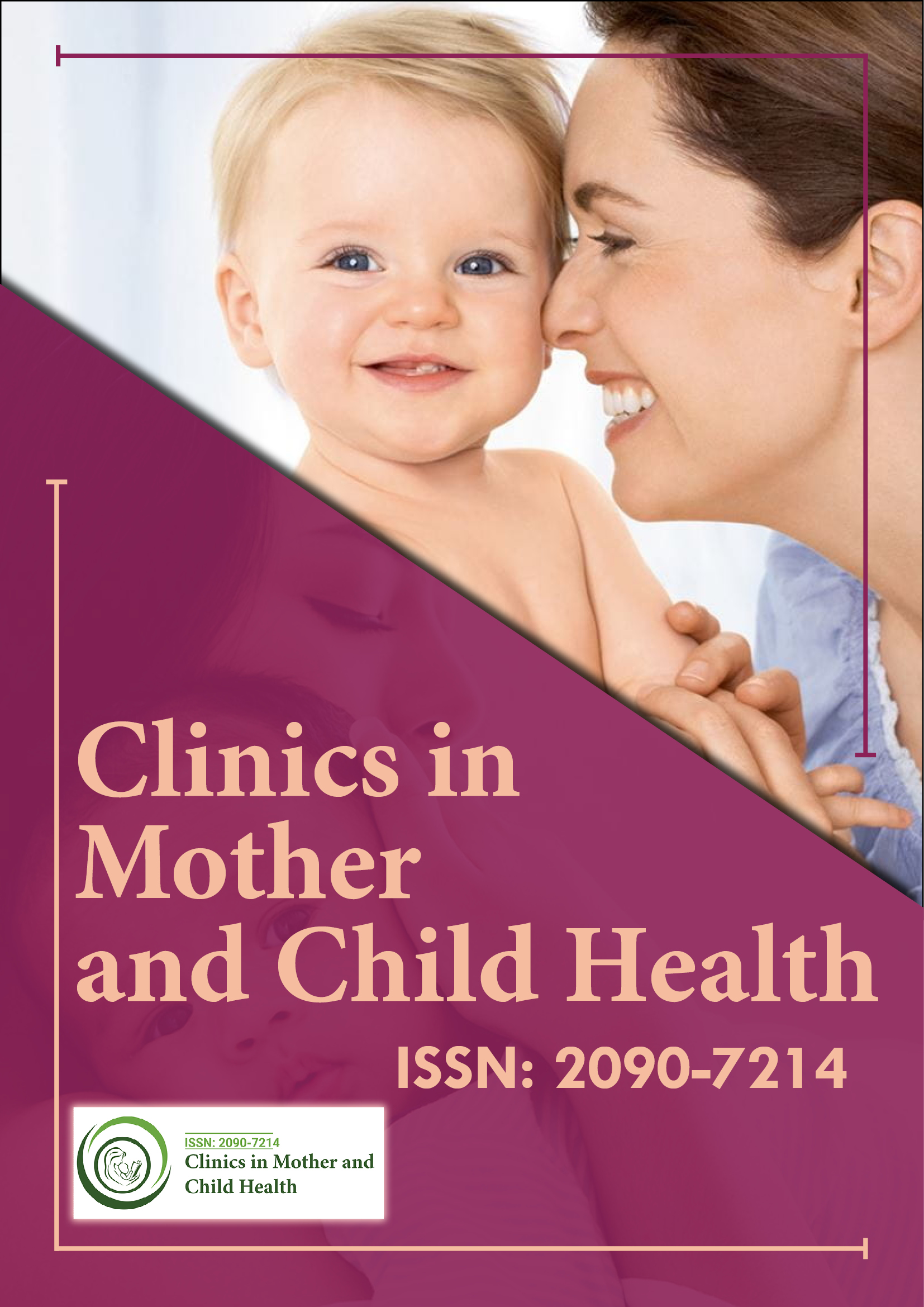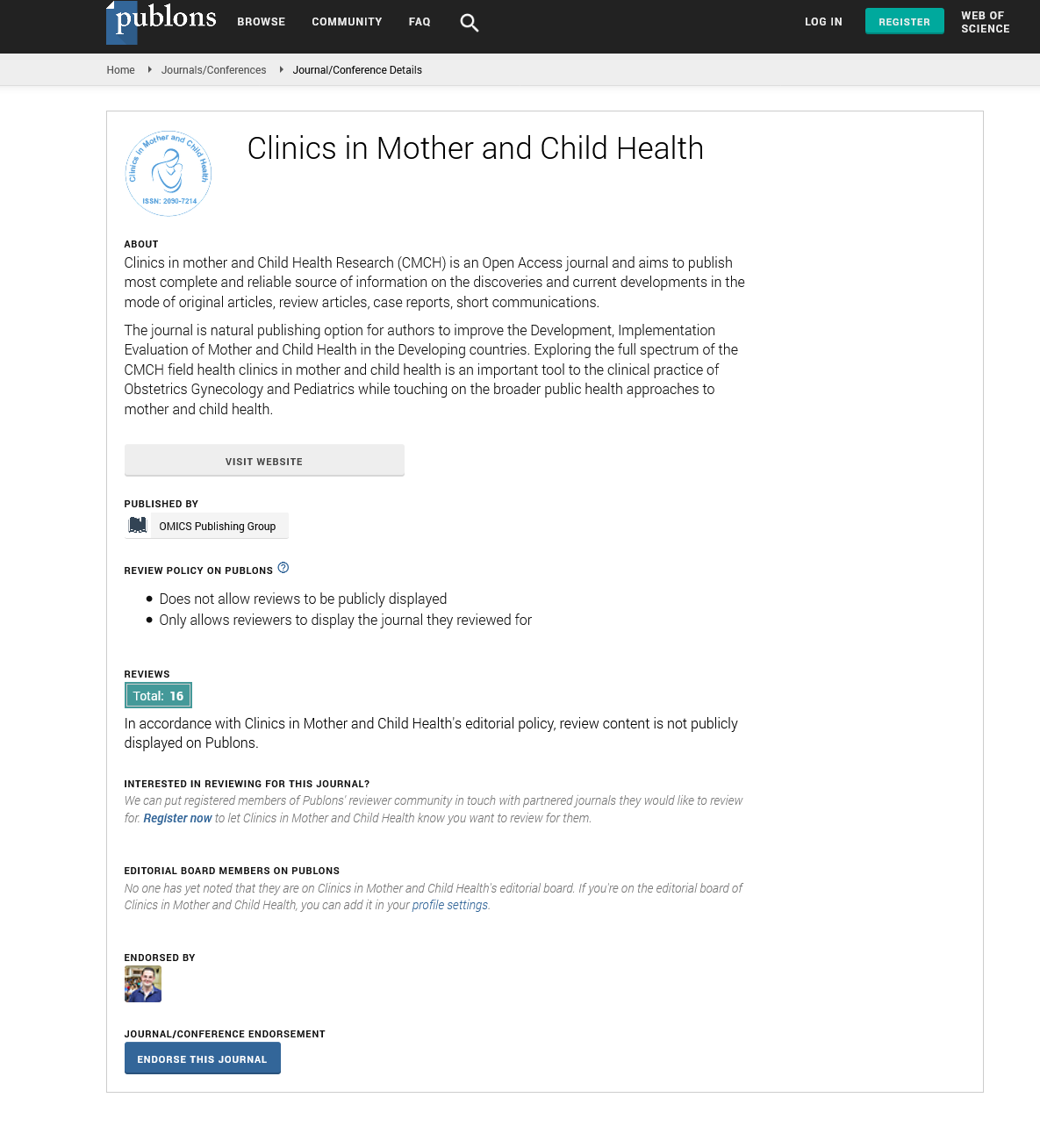Indexed In
- Genamics JournalSeek
- RefSeek
- Hamdard University
- EBSCO A-Z
- Publons
- Geneva Foundation for Medical Education and Research
- Euro Pub
- Google Scholar
Useful Links
Share This Page
Journal Flyer

Open Access Journals
- Agri and Aquaculture
- Biochemistry
- Bioinformatics & Systems Biology
- Business & Management
- Chemistry
- Clinical Sciences
- Engineering
- Food & Nutrition
- General Science
- Genetics & Molecular Biology
- Immunology & Microbiology
- Medical Sciences
- Neuroscience & Psychology
- Nursing & Health Care
- Pharmaceutical Sciences
Perspective - (2025) Volume 22, Issue 8
Clinic Networks for Mothers and Children in São Paulo Peripheries
Ana Carvalho*Received: 01-Aug-2025, Manuscript No. CMCH-25-30095; Editor assigned: 04-Aug-2025, Pre QC No. CMCH-25-30095; Reviewed: 16-Aug-2025, QC No. CMCH-25-30095; Revised: 21-Aug-2025, Manuscript No. CMCH-25-30095; Published: 28-Aug-2025, DOI: 10.35248/2090-7214.25.22.541
Description
In the outer districts of Sao Paulo, maternal and child health clinics provide essential services to vulnerable populations facing both limited hospital access and significant social and economic hardship. These clinics deliver a comprehensive range of services including prenatal check-ups, child growth monitoring, routine immunizations, postpartum care and health education. They also act as hubs for social support and community outreach, especially in neighborhoods lacking adequate infrastructure. A strong emphasis is placed on encouraging pregnant women to begin prenatal care as early as possible. During routine visits, midwives and specialized nurses assess the mother’s overall health, track fetal development, conduct key laboratory tests (such as screenings for HIV, syphilis and anemia) and provide guidance on nutrition and micronutrient supplementation. High-risk pregnancies such as those involving preeclampsia, multiple babies, or fetal abnormalities are referred to better-equipped municipal hospitals. These referrals follow established protocols, with clinics maintaining reserved slots at referral centers to ensure timely attention for complex cases.
Child health is closely monitored through regularly scheduled visits. Children’s height and weight are tracked using standardized growth charts, while feeding and nutrition habits are reviewed with caregivers. Vaccinations are administered following Brazil’s national immunization schedule. Clinics also conduct screenings to evaluate psychomotor development and identify any early signs of delay. If concerns arise, referrals are made to pediatricians, physical therapists, or social services. In addition, many clinics organize group sessions for parents, covering hygiene, infant care and developmental stimulation techniques. Many families in these areas deal with pressing social challenges such as poverty, insecure housing and limited education. Social workers within the clinic teams play a vital role by assessing these social determinants and linking families with housing assistance, food aid, income support programs and early childhood services. This integrated approach not only addresses immediate health concerns but also tackles the underlying conditions that influence maternal and child health outcomes.
To extend their reach, mobile health units are deployed to communities with low clinic attendance. These traveling teams set up in schools, churches and local community centers to provide basic health checks, immunizations and health education. This mobile model has proven effective in reaching mothers who might not otherwise seek care. Some clinics also organize larger-scale “health fairs,” where multiple services such as vision exams, dental screenings and nutrition consultations are offered in a single location, making access more convenient for families.
Technology plays a key role in ensuring service efficiency and coordination. Clinics use digital health records that are linked to the broader municipal health network, allowing for real-time updates and centralized data access. Clinic managers and public health officials use these systems to monitor performance indicators such as the number of prenatal visits, immunization rates, maternal and infant health outcomes and missed appointments. When a clinic falls short on certain indicators, additional resources, training, or administrative support are provided to help improve service delivery. Multiple strategies are used to reduce access barriers for patients. These include offering extended hours, weekend appointment options, transportation subsidies and childcare support during clinic visits. Community health agents also follow up with mothers who miss appointments, either by phone or home visits, to reestablish care. Public awareness campaigns delivered through local radio, neighborhood posters, or ads on public buses help dispel myths and fears around vaccines, medical procedures, or delivering in healthcare facilities.
In many peripheral neighborhoods, the strengthening of clinic networks has led to measurable improvements. There are now lower rates of maternal complications, fewer early neonatal deaths, broader and more consistent immunization coverage and better growth outcomes among young children. However, persistent obstacles remain in informal settlements, particularly those prone to flooding, difficult road access, or rapid unregulated expansion. Maintaining reliable clinic infrastructure, ensuring vaccine cold chain systems remain stable and securing ongoing funding remain pressing challenges. The continued success of these clinics relies on coordinated partnerships involving municipal health departments, universities, non-governmental organizations and local community leaders. Ongoing staff development is crucial, with training focused on community engagement, preventive medicine and connecting patients to social support networks. Although economic instability may impact financial support, the foundation of maternal and child healthcare services in Sao Paulo’s underserved outskirts continues to be a cornerstone for improving health outcomes in marginalized urban settings.
Citation: Carvalho A (2025). Clinic Networks for Mothers and Children in Sao Paulo Peripheries. 22:541.
Copyright: © 2025 Carvalho A. This is an open-access article distributed under the terms of the Creative Commons Attribution License, which permits unrestricted use, distribution and reproduction in any medium, provided the original author and source are credited.

